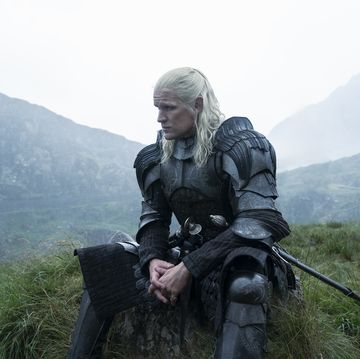When Liza Lou’s new exhibition, Classification and Nomenclature of Clouds, opens on September 6, it won’t just mark the artist’s first New York solo show in more than 10 years, but will also serve as the inaugural exhibition at the new, Peter Marino-designed outpost of her gallery, Lehmann Maupin. The exhibition will feature a new series of Lou’s sculptures as well as a 100-foot-long, site-specific installation, all boasting the woven glass beads for which the MacArthur Grant winning artist has become known. “It’s been a body of work that’s been all about asking questions about what’s possible in terms of art material,” Lou says. “What are the boundaries between painting and sculpture?”
Here, Lou opens up about her process for our peek inside the habits of a creative mastermind.
How do you prepare yourself to be creative; what’s your ritual?
I wake up very early ,while it’s still dark. I like to work when I can hear the owls outside my studio door. There are no distractions, and there’s this intimacy with what I’m working on. I don’t know if that qualifies as a ritual. I don’t set my alarm. I just wake up. It’s like I get this giant nudge like it’s time to get up.
What place is most conducive in which for you to work?
My studio, in Topanga Canyon just outside L.A.
What one element is absolutely necessary for your process?
I think solitude. I work with a lot of people, but those early hours are when I have my solitude. And then to be in the practice, to be in the flow… that opens out into working with other people.
What’s your go-to snack?
No, no snacking. I’m not much of a snacker.
How do you take your coffee?
Green tea is my drink of choice.
Who’s your favorite collaborator?
My studio team in South Africa.
What do you do most often to procrastinate?
Read. Literary fiction, non-fiction essays, those are my guilty pleasures. Because I’m deep into looking at clouds for this body of work, I’m enjoying The Invention of Clouds by Richard Hamblyn. It’s really interesting non-fiction. It’s funny, when I’m right on a deadline I can’t read fiction. I don’t want to go anywhere else. I don’t want to dream about anything else or be in another world; I have to be in this one.
What’s your best trick for overcoming a block?
I meditate. I don’t mean it in a lofty way; I meditate in a very practical way. One method of meditation is walking meditation, and it’s really about kind of grounding yourself, being present. I think procrastination is about being too much in your head and too much in your thoughts and not in the moment. So, procrastination is about making the problem that you’re trying to solve bigger than it is and a meditation can be a form of being present to the practicality of what it is you’re doing.
It’s said that genius is one percent inspiration and 99 percent perspiration. What is that ratio like for you?
I don’t really like the G-word. I think it’s one of those loaded words. I’m more interested in the humility of a daily practice, which includes failure and humiliation as fundamental art materials. I think a more interesting ratio would be to think about failure as a big piece of it, and then maybe there’s some inspiration.. I think it’s more about a daily practice, working through ideas, working through curiosity, to get to the other side and make an artwork.
What have you learned from a failure?
I think sometimes that it’s the cracks that make things interesting. It’s the fissures and the failures, and everything that becomes a piece of the work. So, what I’ve learned from failure is that failure has to be part of the work—but who’s deciding? Who’s deciding what’s a failure?
What’s your dream project?
To get eight hours of sleep.
What’s your favorite creation thus far?
I heard somewhere that every artist thinks that their current work is their most important. And I’m so focused on the current work right now that it’s hard to feel otherwise.
Adam Rathe is Town & Country's Deputy Features Director, covering arts and culture and a range of other subjects.
















